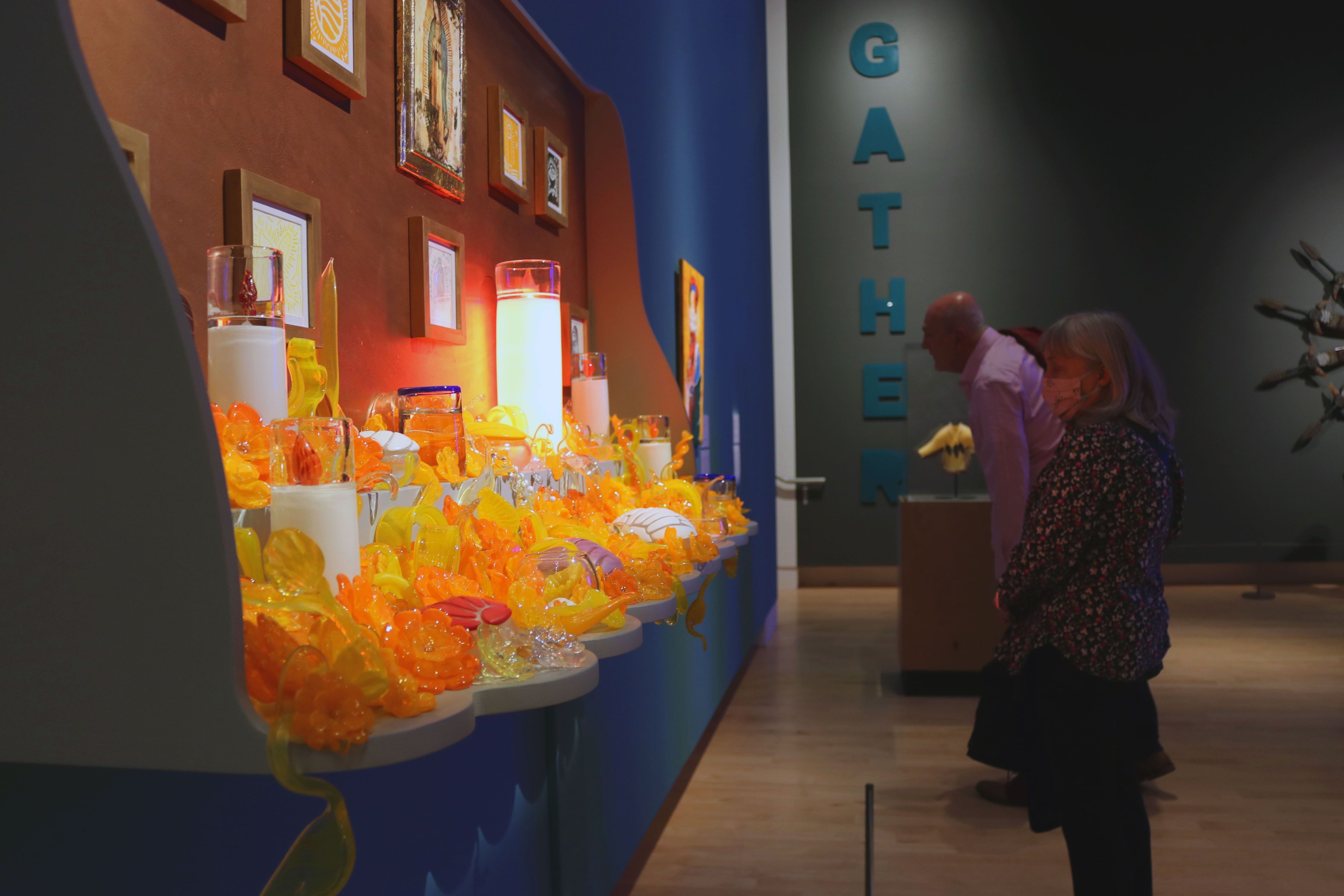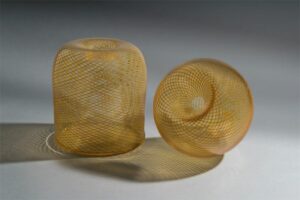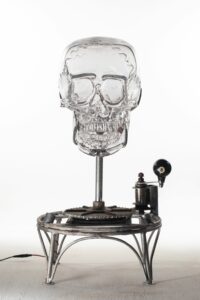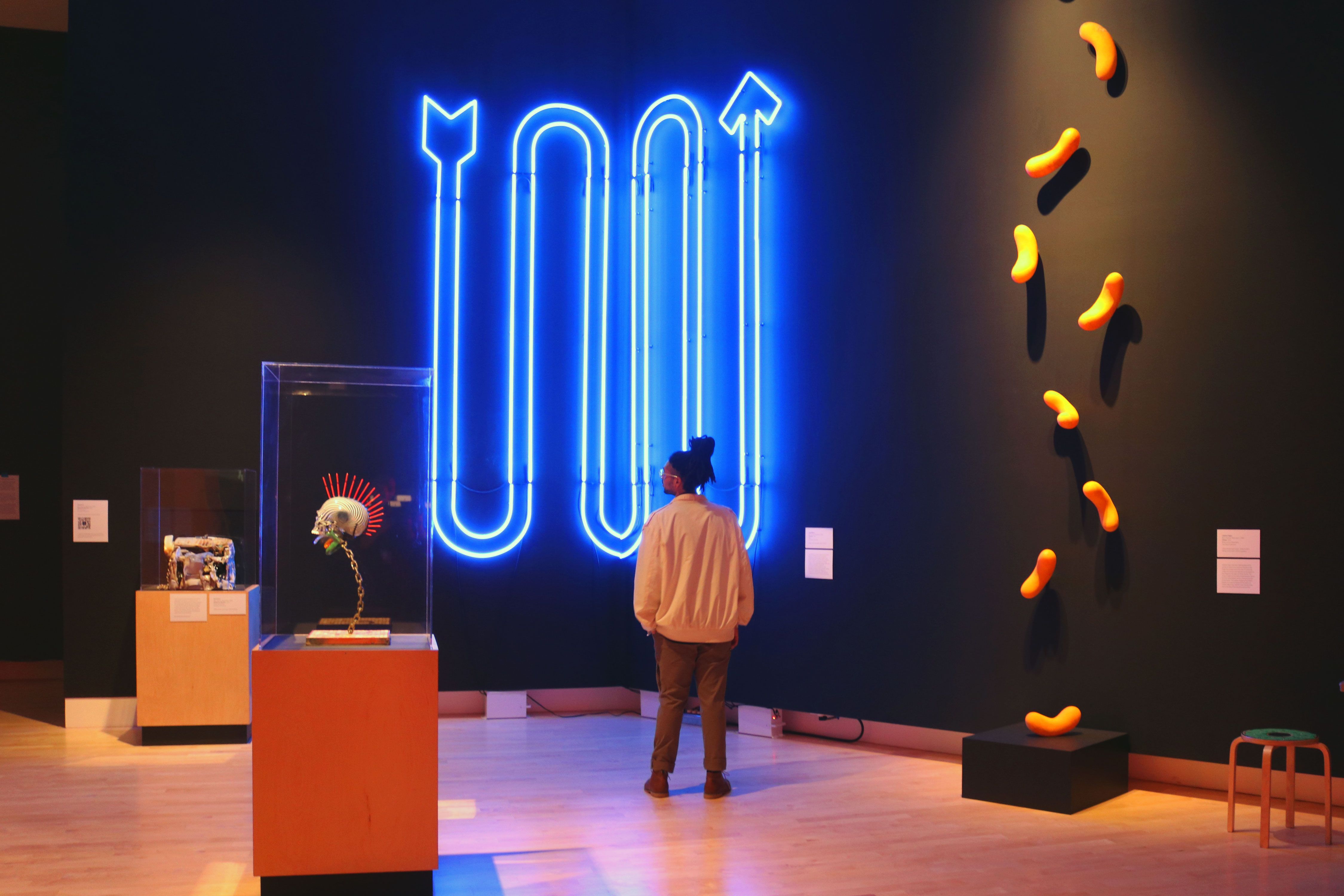
27 Years of Hilltop Artists On Display At GATHER Exhibit
Listen
(Runtime 2:24)
Read
In 2005, Trenton Quiocho was a Tacoma high school student who signed up for a glassblowing elective. The class, taught by the organization Hilltop Artists, would set him on a trajectory to a career in glass art.
“I remember seeing another Hilltop Artists student doing a demonstration that day,” Quiocho says. “And I think after watching, I was really, I wanted to fully invest my time in learning how to blow glass.”
Hilltop Artists is a youth development nonprofit that started in the Hilltop neighborhood of Tacoma. What began as artists teaching children out of a woodshop, has since grown to two locations in Tacoma Public Schools, serving around 650 students annually. All classes are free, and proceeds from any pieces made go back to support the nonprofit.
Quiocho went on to work full time at Seattle glass factory, Glassybaby, where he says he further developed his skills, before going to work for Chihuly Inc. — as in Dale Chihuly, the world-renowned glass artist from Tacoma, who, alongside Kathy Kaperick, started Hilltop Artists in 1994.
Quiocho continued to work part-time with Hilltop Artists, but after pandemic layoffs at Chihuly Inc., his journey came full circle.
Once a Hilltop Artists student, Quiocho is now employed full-time as production and hotshop manager with the organization. He is currently the curator of the organization’s exhibit GATHER: 27 Years of Hilltop Artists at the Tacoma Art Museum.

One of curator, Trenton Quiocho’s glass pieces in the exhibit, “Trapped.” Courtesy of the artist.
“The title ‘GATHER’ has dual meanings, because it’s a gathering of artists that have come up through the Hilltop Artists program, or have lived on the Hilltop,” Quiocho says. “And it’s also ironic because the term ‘gather’ is one of the first things you learn to do in glassblowing. So the process of taking glass out of the furnace is called gathering.”
The initial exhibit was going to be a pop-up of Hilltop Artists’ work at the Glass Art Society in 2020, which was being hosted in Tacoma for the first time. But, the conference was postponed and the museum closed due to the pandemic.
“It was one of those wonderful twists of fate, really,” says David Setford, executive director of the Tacoma Art Museum. Setford says the time away gave them the space to expand the exhibit.
It now features 21 artists, all Hilltop alumni, in a spectrum of mediums — paintings, neon work, sculptures, and of course, blown glass.

Artist Evan Schaus’ “Gear Head” piece in the exhibit. Courtesy of the artist.
This past Sunday, students and alumni from Hilltop Artists participated in a mobile hot shop demonstration at Tacoma’s Together in Art and Glass event. Quiocho brings us into the demonstration, prepping me to walk into the space.
“The whole goal was just to not only highlight the program, but people within the community that came up and are very talented individuals and artists that I don’t think always have the opportunities to showcase their work in such a professional, prestigious environment like an art museum,” Quiocho says. “And for it to be people from the community, in their own local museum, is huge.”
The exhibit is a reminder of the power of arts education.
Like Hilltop Artists, the Tacoma Art Museum offers arts education classes., David Setford says he wants to insert an “a” for “art” into STEM curriculum and make it STEAM.
The STEAM movement is, to make a bad pun, gaining steam. Including art in the science, technology, engineering and mathematics curriculum sets students up for success in “innovation and fearless creativity,” according to the STEM Education Guide.
“We believe in the primacy of art as a method of changing people’s lives,” Setford says. “And if you can finally see yourself in the local art museum, and by extension in other art museums, that must be a huge motivation to concentrate and double down on your efforts as an artist.”
For Setford, having art be a part of students’ education is personal.
“Art was really my means of expressing myself,” Setford says. “And it gave me a prospect in life, which I didn’t have.”
GATHER: 27 Years of Hilltop Artists is showing at the Tacoma Art Museum from now until September 4.
Produced with assistance from the Public Media Journalists Association Editor Corps funded by the Corporation for Public Broadcasting, a private corporation funded by the American people.
















